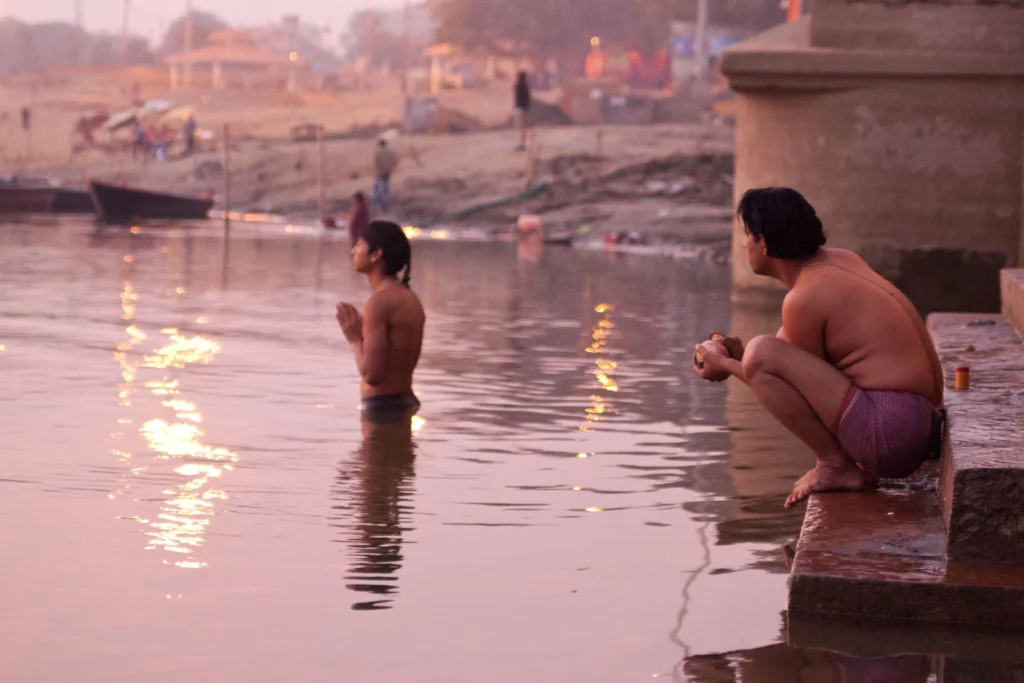I am deeply honoured to receive the Amrithagiri Chair for World Peace from the Amrithagiri Research Foundation (ARF). This prestigious recognition, complementing my role as UNESCO Chair for Peace and Intercultural Understanding, has inspired me to further explore the profound potential of the Maha Kumbh Mela as a transformative force for peace building.By uniting diverse cultures and traditions, we can collectively harness the Mela’s unparalleled energy to cultivate deeper harmony, understanding, and cooperation across the globe. Together, we have the opportunity to make lasting strides toward a more peaceful and interconnected world.
I genuinely believe that the Maha Kumbh Mela, with its vast scale and global participation, beautifully embodies the Indian ethos of Vasudhaiva Kutumbakam — the idea that the world is one family. This extraordinary event transcends its religious roots,celebrating universal brotherhood and a sense of interconnectedness. When millions come together from various cultures, traditions, and backgrounds, it symbolizes unity,helping to dissolve social and geographical barriers.
Just as rivers converge at the Kumbh Mela’s ‘Sangam’, so too do our cultures, beliefs,and practices, culminating in a heartfelt spiritual confluence. Pilgrims gather, not only in pursuit of liberation (Mokṣa) but also in search of serenity (Śānti). They are guided by saints and sages who illuminate a path of peace, woven into the fabric of India’s ancient philosophy.
The ritual of Sacred Bathing (Śāhī Snāna) serves as an opportunity for spiritual cleansing and renewal, representing a profound yearning for inner peace. Through Spiritual Discourses (Satsanga), cherished lessons from revered saints inspire individuals toward harmony, compassion, and wisdom. Activities like Yoga, Meditation, and Camps create a nurturing environment for mindfulness, alleviating stress and fostering emotional resilience. This vibrant pilgrimage brings millions together, cultivating a deep sense of togetherness and global brotherhood. The spirit of Seva (Service) and Generosity shines forth in countless acts of kindness, such as providing free food and healthcare,exemplifying selfless compassion.
Rooted in Vedantic and yogic traditions, the Kumbh Mela reminds us that cultivating inner peace is essential for achieving outer harmony. The teachings of Sanatana Dharma, shared through discourses, meditation, and rituals, guide us toward self purification and the realization of our universal connection. The Mela offers a sacred space for detachment from worldly distractions, inviting self-reflection and spiritual growth. Immersed in collective devotion, pilgrims can experience profound innerfulfilment, connection, and enlightenment. This immense gathering fosters humility,devotion, and the promise of transformative change.
The Maha Kumbh serves as a beautiful testament to our shared humanity, illustrating that despite our diverse cultural and geographical identities, unity is not only possible but profoundly enriching. As millions of pilgrims from various corners of the globe engage in the same rituals, immerse in the same sacred waters, and absorb the same spiritual teachings, they forge bonds that transcend borders. It stands as a powerful symbol of peaceful co existence, reminding us that individuals from all walks of life can come together in harmony.
Cultural exchange thrives in the embrace of the Maha Kumbh, with individuals fromdiUerent backgrounds interacting, sharing traditions, and learning from one another.This journey fosters cross-cultural understanding and bridges divides. The Mela’s focuson inner peace, compassion, and universal oneness sends a heartfelt message ofpeace and harmony to the world. It encourages us to recognize that true unity startsfrom within, radiating outward to inspire a more compassionate society and global community.

The Maha Kumbh Mela beautifully exemplifies key principles for nurturing a peaceful world. First, it embodies ‘Faith Over Fear’, fostering resilience, hope, and optimism,helping us to rise above fear and uncertainty. It underscores ‘Harmony in Diversity’,showing us, that peaceful coexistence is attainable despite our diUerences in backgrounds, languages, and cultures. The Mela encourages ‘Simplicity and Minimalism’, reminding us that true inner peace does not rely on material wealth.Through acts of fasting, prayer, and meditative silence, we cultivate ‘Spiritual Discipline’, nurturing self-control and inner tranquillity. Lastly, the Mela promotes ‘Environmental Awareness’, urging respect for our rivers and nature, and emphasizing the importance of sustainability for fostering global peace.
In essence, the Maha Kumbh is not merely a spiritual gathering; it is a practical lesson in the art of building planetary peace. It oUers a vibrant, dynamic experience thatembodies the pedagogies of peace and reconciliation—two pillars of UNESCO’s mission. As such, it serves as a living example of peace building, where millions from diverse backgrounds converge to showcase the incredible potential of peacefulcoexistence and a culture of peace.
Indeed, the Maha Kumbh Mela transcends its religious significance, standing as a global testament to unity, spiritual oneness, and cultural exchange. It reassuringly reminds us that despite our differences, we belong to one human family. Peace becomes attainable when we embrace our shared humanity, fostering a world where compassion and love prevail.
Post Tags:
Share: